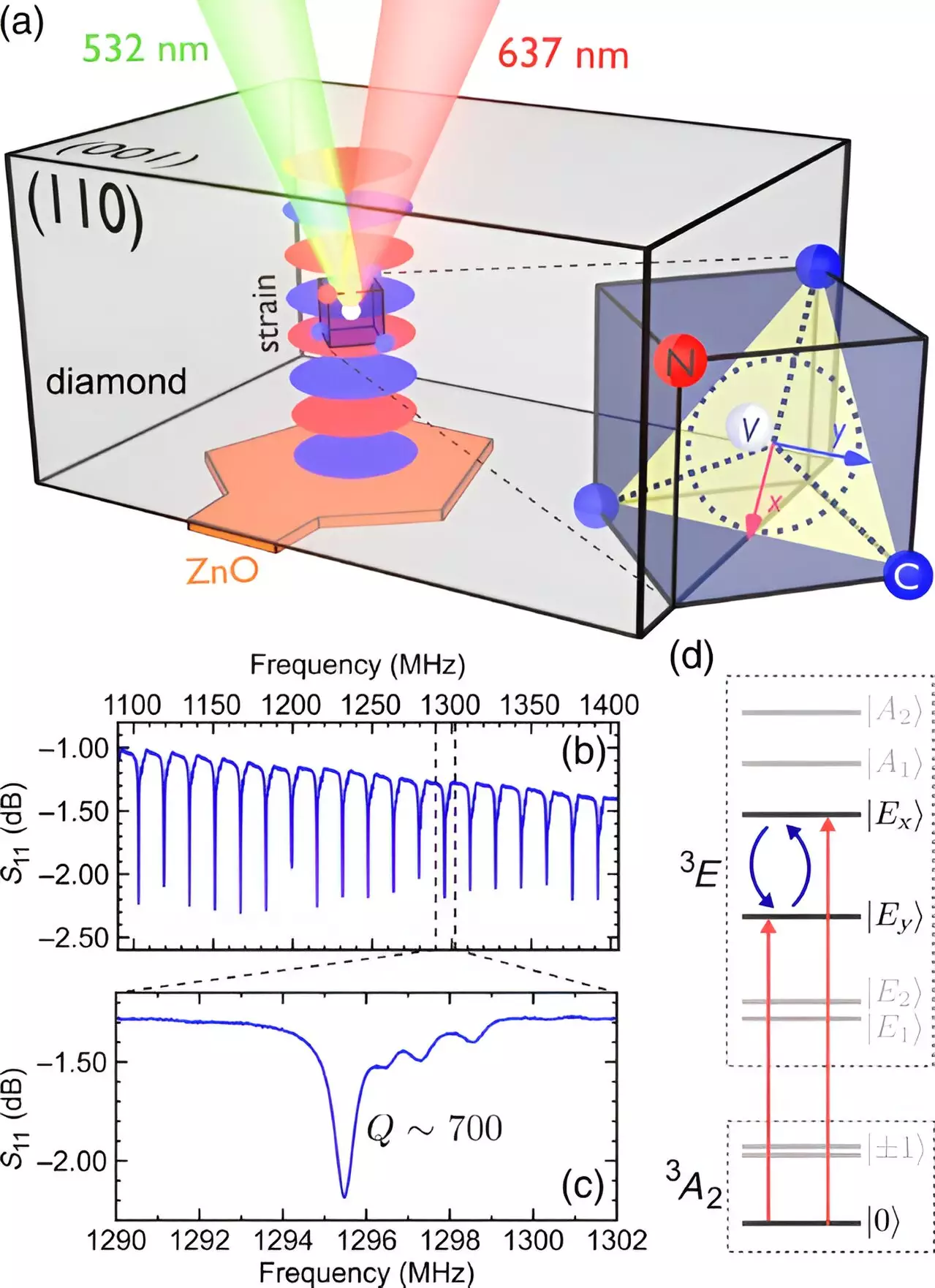The world of quantum technology is constantly evolving, with researchers always on the lookout for innovative ways to control electrons and other microscopic particles. A recent study conducted by Cornell University researchers has shed light on the potential of using acoustic sound waves to manipulate the motion of an electron as it orbits a lattice defect in a diamond. This groundbreaking technique not only has the potential to enhance the sensitivity of quantum sensors but can also be applied to various other quantum devices.
The research, titled “Coherent acoustic control of defect orbital states in the strong-driving limit,” was a collaborative effort between Gregory Fuchs, a professor of applied and engineering physics, Brendan McCullian, his postdoctoral associate, Erich Mueller, a professor of physics in the College of Arts and Sciences, and Vaibhav Sharma, a doctoral student. McCullian constructed a microscopic speaker on a diamond chip’s surface, operating at a frequency that matched an electronic transition. Through techniques reminiscent of magnetic resonance imaging, he successfully demonstrated coherent control of a single electron within the diamond chip.
In the realm of quantum technology, qubits must remain coherent to perform any meaningful tasks. This coherence, however, is fragile and can be easily disrupted by environmental fluctuations. To combat this issue, scientists have traditionally utilized spin resonance, involving microwaves and magnetic fields, to extend qubit coherence times. Fuchs and his team sought to extend this technique to the realm of acoustics and improve the coherence of orbitals.
Significance of the Study
Fuchs’s work holds considerable importance in advancing our understanding of the nitrogen-vacancy (NV) center, a defect in diamond crystals crucial for sensing and quantum networking. By developing new tools to address environmental fluctuations leading to spectral diffusion, the team has paved the way for more stable optical transitions in quantum networking applications. This breakthrough has significant implications for maintaining the consistency of emitted photons’ frequencies.
Collaborative Success
The success of this study can be attributed to the collaborative efforts of the researchers involved. Experimental techniques developed in Fuchs’s lab were complemented by a theoretical analysis from the Department of Physics, providing a comprehensive framework for predictions and result interpretation. This partnership exemplifies the synergy that can drive scientific progress and innovation.
The utilization of acoustic sound waves to control the motion of electrons in a diamond lattice defect marks a significant advancement in quantum technology. By pushing the boundaries of traditional spin resonance techniques into the acoustic domain, Fuchs and his team have opened new avenues for enhancing qubit coherence and stability. This study not only contributes to the fundamental understanding of quantum systems but also presents practical implications for future quantum devices and applications. As the field of quantum technology continues to evolve, innovative approaches like acoustic control are poised to revolutionize the landscape of quantum computing and sensing.

